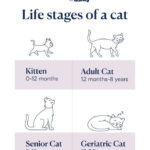When it comes to navigating snowy terrains, vehicles equipped with tracks offer superior mobility compared to traditional wheels. Discussions often arise about the benefits of different track styles, particularly lower profile tracks versus higher, lifted tracks, especially in the context of snow vehicles like Snow Cats. Let’s delve into the advantages of each style.
Advantages of Lower Profile Snow Tracks
Lower profile tracks, which keep the vehicle closer to the ground, offer a unique set of benefits. Firstly, they enhance stability. A lower center of gravity is crucial for improved handling, especially when traversing curves or uneven terrain. This characteristic allows for better control and reduces the risk of rollovers, making them potentially more agile in certain conditions. Secondly, accessibility is significantly improved. The lower height makes entry and exit easier, a considerable advantage for passengers of all ages and abilities. Loading and unloading cargo also becomes more convenient. Furthermore, vehicles with lower tracks are less restricted by height limitations such as low bridges and overhanging branches, offering greater freedom of movement in varied environments.
Advantages of Higher, Lifted Snow Tracks
Higher, lifted snow tracks are designed to elevate the vehicle, providing enhanced clearance and flotation in deep snow. The primary advantage is improved snow shedding. By raising the vehicle, snow is allowed to pass underneath, preventing the vehicle from pushing snow and becoming bogged down. This “snow cat” principle is vital in deep powder conditions where ground clearance is paramount. This increased height also minimizes the risk of becoming high-centered on snowdrifts or obstacles hidden beneath the snow surface. Moreover, the elevated position can improve visibility, allowing the driver to better anticipate changes in terrain and potential hazards. In challenging snow conditions, the superior ground clearance provided by higher tracks often translates to greater mobility and reduced risk of getting stuck.
Ultimately, the choice between lower and higher snow tracks depends on the intended use and the typical snow conditions encountered. Lower tracks prioritize stability and accessibility, while higher tracks emphasize deep snow performance and ground clearance, both contributing to effective navigation in snowy environments, often seen in specialized vehicles like snow cats and other tracked machines.


